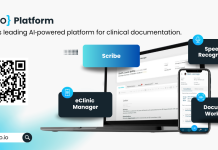Digital solutions can enable government organisations to reach a wider number of people, provide a better experience for service users, and make the organisation more efficient
Technology has become an integral part of people’s everyday lives, even more so now due to the COVID-19 pandemic. This brings immense opportunities for changing social landscapes and helping people overcome barriers – but only if the technology is designed to be inclusive. Digital solutions can enable government organisations to reach more people, provide a better experience for service users, and make the organisation more efficient.
One of the biggest elements is that it allows people to use a government service at the time and location of their choosing rather than being tied to the government’s working hours and locations. This helps with social inclusion by overcoming mobility and speech challenges (e.g. disabilities, access to transportation, different languages, etc). Additionally, this helps people who cannot afford to take time off work or must take care of children or other relatives during the day.
Technology at scale can be challenging to implement in a way that is equitable, efficient, and effective
One of the biggest challenges governments faces in this realm is the breadth of users. Unlike the private sector, which can design its technology for most people, public sector organisations have to consider all users, including those who cannot afford the latest technology. Additionally, engaging with a wide range of users can quickly create an ever-expanding list of problems and pain points that need to be addressed.
Government organisations can quickly become overwhelmed by the challenges of implementing digital solutions for positive change, so here are some keys to success:
1. Understand the landscape
With the massive number of websites, mobile applications, and so many other digital solutions, it is important to understand the external landscape into which the technology is being incorporated. The interconnected nature of society, both online and offline, means that people constantly move between different ecosystems throughout the day. These ecosystems form the bases for which people are empowered or disempowered and therefore need to be understood in the design of solutions. For example, creating a new mobile application to identify available parking spots may make parking easier and reduce congestion, but it could also create more pain if other applications are already being used in surrounding areas.
Understanding the users is extremely important when using digital technology to deliver public services so that people are not excluded. Often, users are categorised by their demographics (e.g. age, race, sex, etc), but this does not give a true understanding of the people who will use the service. There will always be barriers that prevent different people from accessing services in any ecosystem. Depending on the service, there can be many barriers, including disabilities, digital literacy, and access to technology. Rather than solely looking at demographics, user research should be conducted to identify different types of users based on their underlying circumstances.
Additionally, government organisations need to understand the technology landscape involved in similar services that might be utilised by their users. For example, a local government adding an app to pay for parking should look at surrounding locations to see if other apps are already being used. This will also help the organisation understand the feasibility of their ambitions as well as gain knowledge of the important requirements that they should consider when commissioning the work or speaking with technology providers. Understanding the technology landscape also helps understand trends in the market, for instance, if one supplier is becoming the go-to provider.
2. Clarify the problems
Working to make positive change across society is always a challenge due to the myriad of problems that arise when you start exploring the issues. Teams can quickly become overwhelmed by all the ‘pain points’ when they speak with a diverse range of people. However, this is usually a case of multiple people talking about the same issue differently because of their different perspectives. Like most medical illnesses, any given issue will bring with it multiple symptoms, and when there are multiple issues, there will be compounding symptoms that can make diagnosing the problems harder. Large-scale transformations can be dealing with twenty, fifty, or even more problems, which can then come across as several hundred pain points.
Obviously, it is an immense undertaking to solve hundreds to thousands of pain points simultaneously, so it is important to systematically investigate the issues before developing solutions. By digging a little bit into the details of each different pain point, the underlying problems or root causes can be identified. Just as most illnesses can be diagnosed quickly using the right tests, it does not require a forensic investigation to identify the real problem in most cases. If the landscape is understood, it means that the diagnosis of the problem will be easier because hypotheses can be developed and tested based on knowledge of how that user interacts with other parts of the ecosystem.
While this may appear to add extra time to the project, it ends up being more efficient and effective because it reduces the complexity of the situation and ensures the outcomes improve people’s lives rather than just dulling the pain. Additionally, many challenges people have with government services are caused by organisational structures and processes. Clarifying the problems makes it easier to understand which issues are due to poor user experience of the technology and which have underlying challenges unrelated to the technology. This enables the organisation to identify opportunities where technology can drive positive change for users and where it can be used to overcome organisational silos and inefficient processes in the delivery of services.
3. Solve problems iteratively
Agile methods are the standard way of developing digital technology, but these methods alone can drive the focus towards technology users rather than the problems people are facing across the social spectrum. When designing digital solutions that are intended to make positive changes in society, the focus needs to be on the underlying problems first, with technology being a means to implement the identified solutions. Agile methods should still be used when developing the technology, but the product backlog should be fed from an understanding of what is needed to solve the problems rather than directly from what users want. This can be done by using Design Thinking methodologies to explore the problem and solution spaces and then using the outputs of these methods to feed the technical product backlog. Additionally, a transformation roadmap can be developed to show the order of exploring and solving problems, which then feeds the technical product roadmap.
Each problem will take time to explore properly, so prioritisation is critical to ensure that momentum can be maintained. Solving large problems will typically have greater benefits for users and will have a larger impact on the technical solution. However, it also takes longer to explore the problem and develop the appropriate solution, which can cause stakeholders to become impatient. At the same time, exploring smaller issues first can help technical development get started and make the technology easier to implement. In this case, though, the benefits will be lower, which can cause stakeholders to lose interest in the project at an early stage. To counteract these challenges, the transformation roadmap can be developed where small, medium, and large solutions overlap so that stakeholders see a routine cadence of positive changes occurring.
4. Ensure appropriate funding
Funding is critical to any government project. However, transformation projects often lack the funding or resources to produce the desired results. This can be caused by budgetary limitations, lack of understanding of the resource requirements, or unexpected delays, among other things. Many times, projects start with a very tight budget, either because the business case did not ask for enough or because the requested amount was reduced by decision-makers.
When solving problems iteratively, it is very important to keep this in mind when identifying phases or work packages. The size and scale of the change will be important for obtaining funding. Too small of a scope and it will likely need to fit into an existing budget, whereas too large of scope will be at risk of being reduced. Additionally, when breaking a large transformation project into multiple phases, each phase will set the expectations and adjust ambitions for the following phases. If a phase is late, over budget, or does not deliver the expected results, then it will reduce the ambition for future phases. To prevent this, the organisation should ensure each phase has the appropriate funding. This seems obvious, but it can be very difficult in a world of limited budgets.
This piece was written by Tim Kleinschmidt, who leads the service design practices for Cadence Innova.











